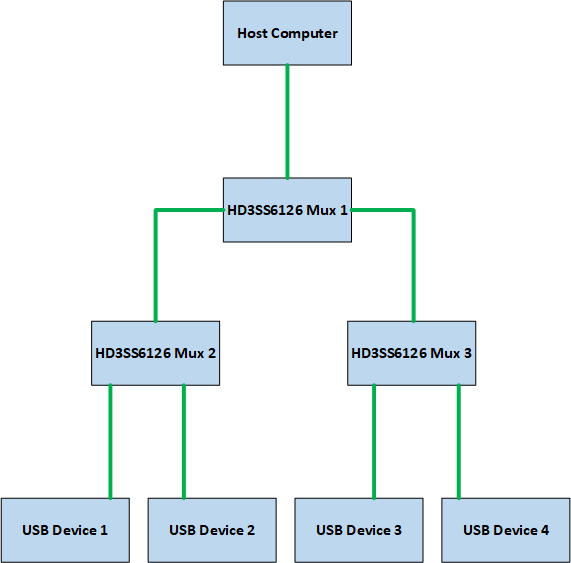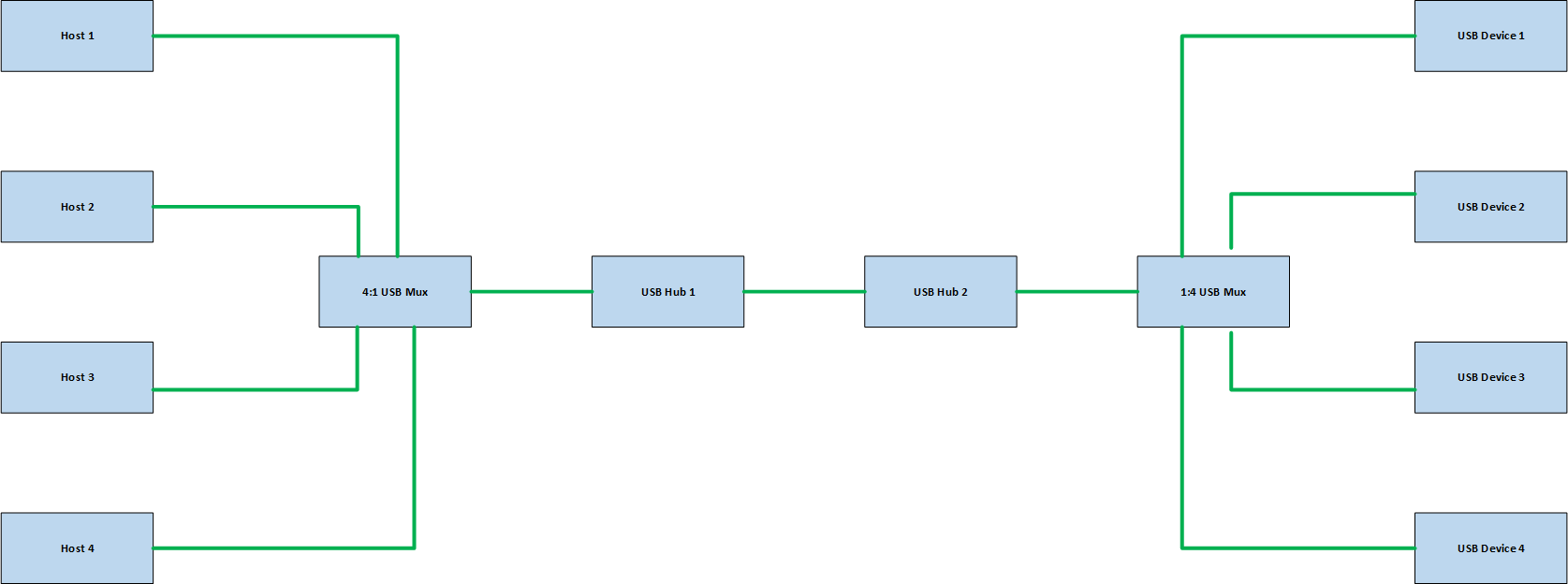Other Parts Discussed in Thread: TUSB8041A, TUSB522P, TUSB212, TUSB1002A
Hi,
I want to daisy chain the HD3DD6126 so I can have a 4:1 / 1:4 mux. Can this chip be daisy chained? If so, is there a reference design that could be provided?
If not, what is the reason? If a redriver is used in the chain, can the mux be daisy chained?
Thanks,
Jeevan





